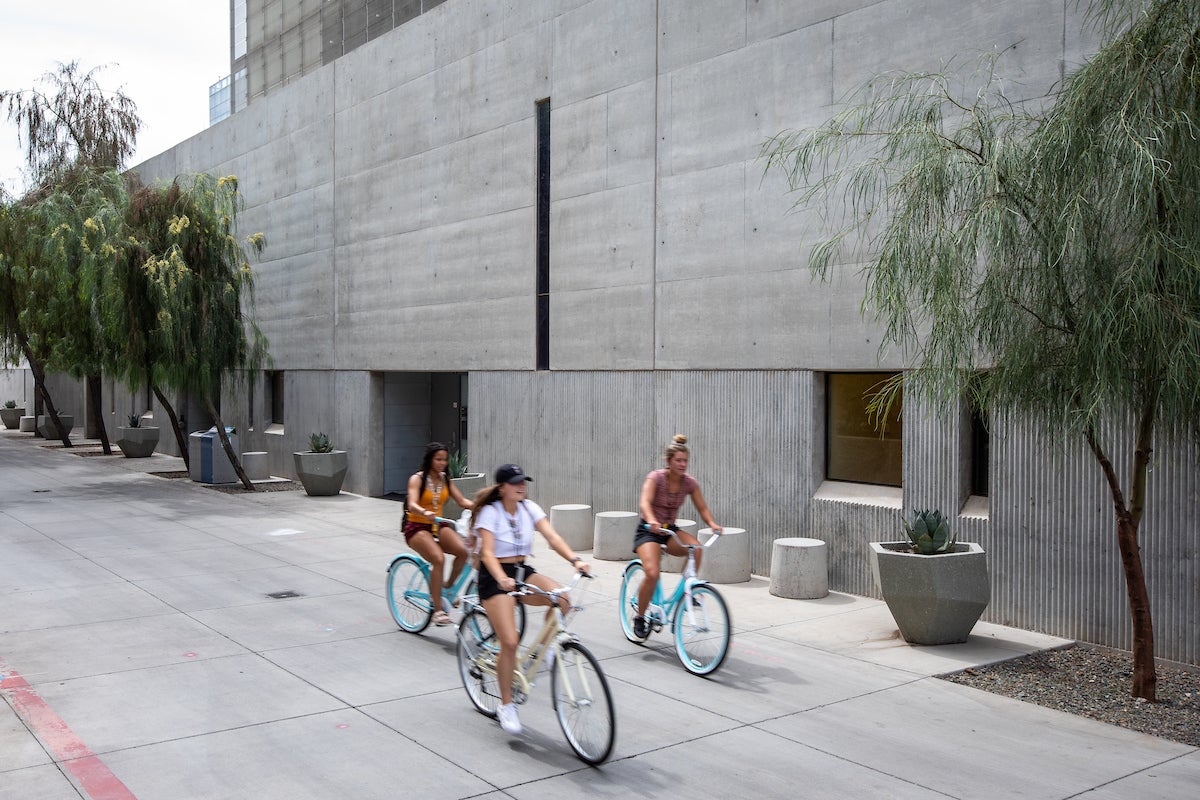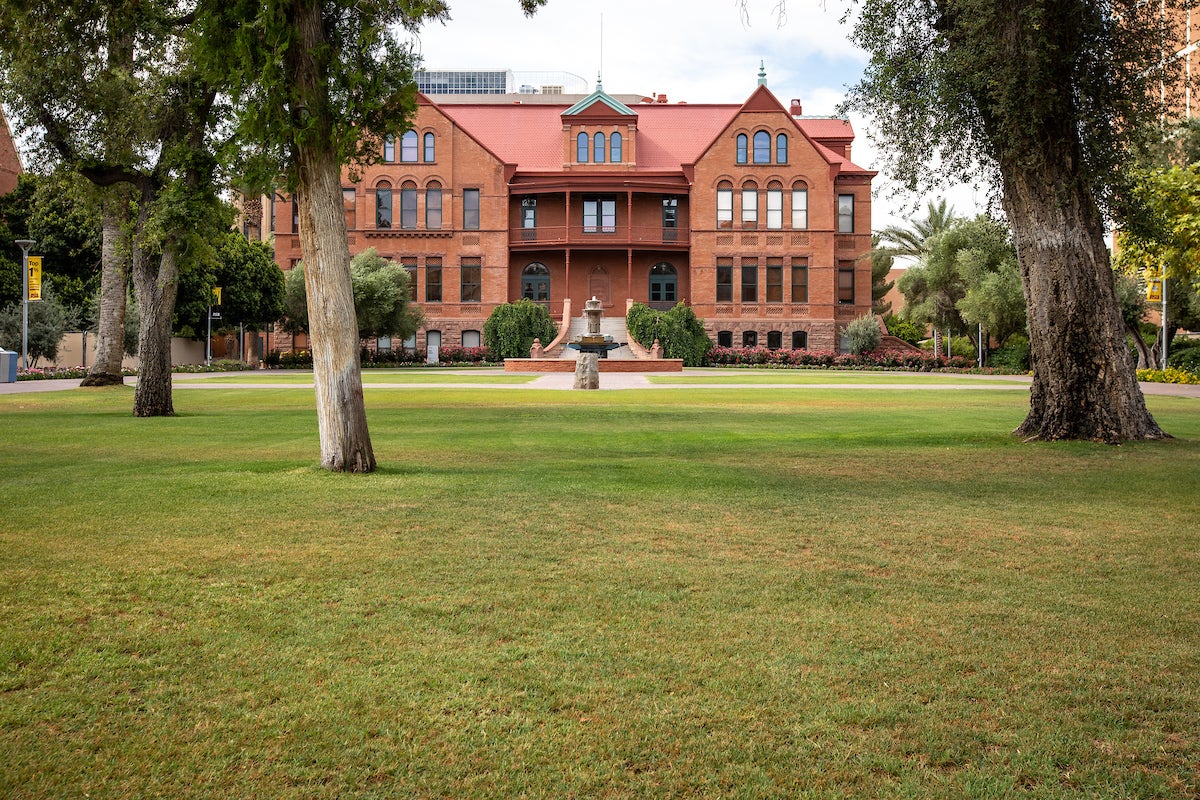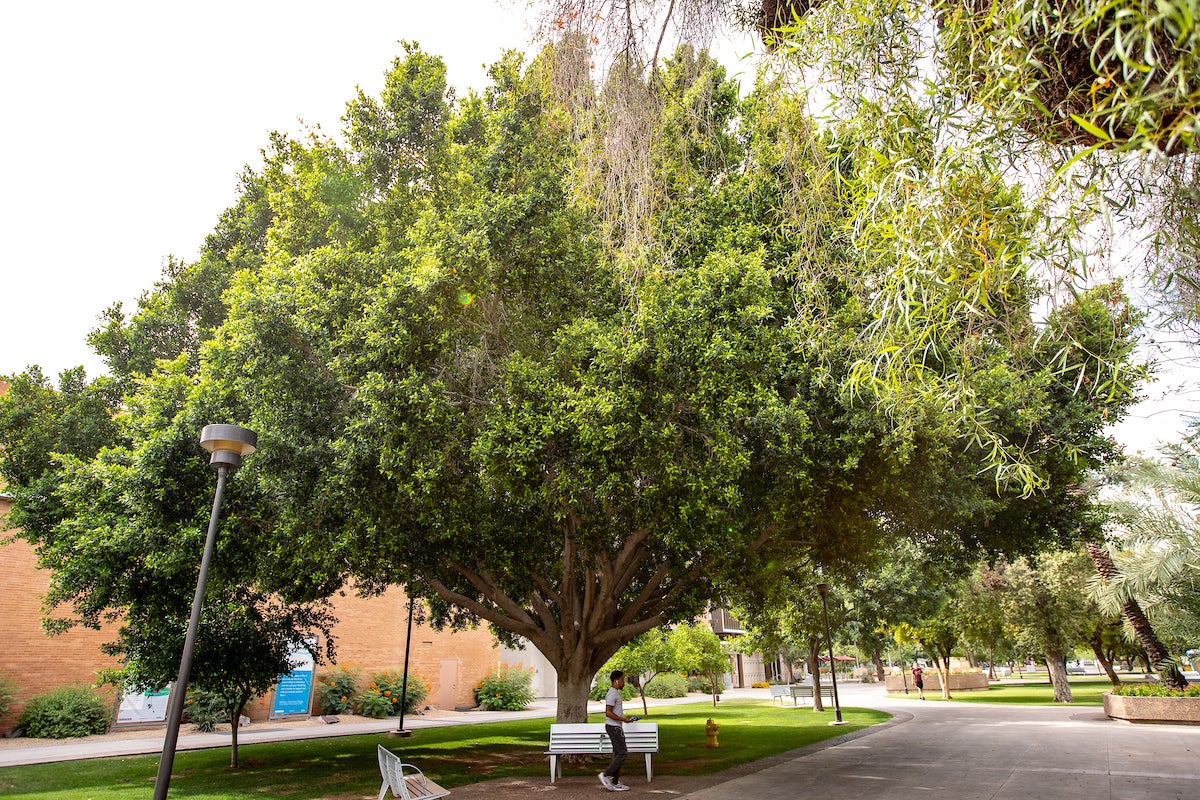Editor's note: ASU Now is sharing these 2019 study results on the hottest spots on the Tempe campus and how to stay cool for the start of the 2020 school year, because, well, it's officially pretty dang hot.
“To sit in the shade on a fine day and look upon verdure is the most perfect refreshment.” — Jane Austen
You're a freshly-minted Sun Devil! Congratulations! But you've moved here from the Midwest or the Northwest or some other similarly cool and verdant place. The Arizona heat is, frankly, startling.
We have two pieces of good news for you as you start classes in August in Arizona. One: It's not always this beastly. Two: This is a guide to campus spots to avoid and to seek out when the heat is on.
Luckily, ASU has a scientist who studies urban heat.
In summer 2019, two Arizona State University scientists published a study of shade, heat and the best ways to cool pedestrians.
Urban climatologists Ariane Middel and Scott Krayenhoff did a three-year study of the Tempe campus, mapping out the three coolest (and hottest) spots on campus, taking readings even during excessive heat and record temperatures and discovering what works best to stay cool. This summer, Middel has extended her study to 159 new locations, mostly on campus, but some on Mill Avenue as well.
“It all boils down to shade,” Middel said. “To generalize, anywhere you have a huge tree that’s over grass. In terms of water use, it’s not the best solution, but it’s one of the coolest solutions. … Just putting grass doesn’t do much. Only planting grass without shade doesn’t make you more comfortable.”
In fact, one of the most miserable summer places on campus is surrounded by a lawn.
Middel measures radiant temperatures, not air temperatures. All her readings are taken at noon. She classified locations into three shade types:
- Natural, such as trees
- Engineered, like awnings, umbrellas, and solar structures.
- Urban forms, such as buildings, overhangs, etc.
Urban forms provided the most comfort. “That was the most effective because it’s so solid," Middel said. But, it depends on building orientation. “With that type of shade it’s not very flexible, but it’s efficient," she said.
Trees with a low leaf density like palo verdes and ficus were most effective. Engineered shade is also effective. Buildings with tunnels, like Coor Hall, or breezeways, like Payne Hall or the Social Sciences Building, were nice and cool.
“Any shade is great," Middel said. "There was no shade we looked at that was useless.”
The three hottest spots on campus
1. At the center of the "X" sidewalks on Hayden Lawn (pictured above).
2. The walkway between Coor and Payne halls.
3. The intersection of Cady and Tyler malls.
(“That was the worst,” said Middel, who would know.)
The three coolest spots on campus
1. The breezeway at Coor Hall.
2. Under the trees on the Old Main lawn.
3. Under the giant ficus tree just west of the Memorial Union.
Next after shade as the best way to chill pedestrians comes cooling ground surfaces, like grass. Tree-shaded grass felt like 109 degrees Fahrenheit when the temperature was 119 F.
Vertical surfaces like hot building walls make it feel hotter. The walkway between Coor and Payne halls is completely concrete. The peak mean radiant temperature Middel and Krayenhoff measured there was 168 F.
The study’s findings give a look at how to best combine and place design features — green spaces, trees, and shade structures — to cool pedestrian spaces and can inform future construction and landscaping at ASU and in the broader community.
The city of Phoenix is struggling with how to cool the place down as heat-related deaths rise every year. In 2010 the city came up with a tree and shade master plan. Last year the city council voted to ramp up the plan by implementing a goal of having 25% of the city covered in shade by 2030. (Phoenix was at 12.4% in July 2015, according to officials).
Planting trees is great, Middel said, but they need to be planted where people walk. “That’s much more important than the number of trees,” she said.
The combination of rising temperatures, longer summers and the urban heat island effect are not pointing in good directions. Desert dwellers need to adapt.
“We’re expecting much warmer temperatures and for a longer time too,” Middel said. “A heat wave that might last two or three days now could potentially last for a week or so. … Temperatures we have here might occur elsewhere in the country. … It’s really important to think about how we can use urban form and design to try to mitigate that. We probably will not be able to reduce air temperature by that much, whatever warming we expect. It’s much more important what radiation hits your body — like shade versus sun, that’s much more important.”
To collect data on radiation, the scientists used a garden cart loaded with instruments like you’d find on a weather station. It measures air temperature, humidity, wind speed, wind direction and location with a GPS. The cart has 12 radiometers that measure incoming radiation from six directions. This includes shortwave radiation (think visible sunlight and UV radiation) and longwave radiation (the heat that gets emitted from hot surfaces). The shortwave and longwave radiation can be integrated into mean radiant temperature, the sum of all the radiation that hits a person’s body from 360 degrees. It’s a good measure of the human thermal experience in dry climates.
Assistant Professor Ariane Middel shows off MaRTy, the observational platform used in her newly released study. Photo by Charlie Leight/ASU Now
The cart is named MaRTy, for mean radiant temperature. They took MaRTy on a campus tour on a record-breaking June day in 2016 when the National Weather Service issued an excessive heat warning. The airport reported 119 F that day. It was the fifth-highest temperature ever recorded in the Valley. Four hikers died that day.
They measured 22 locations with MaRTy every hour from 10 a.m. to 9 p.m. The locations are a combination of various sun-exposed and shaded areas (by trees, photovoltaic canopies, tunnels) with different ground covers (grass, concrete, gravel, asphalt). To stay hydrated, they drank all the sports drinks in one vending machine.
Urban planners and landscape architects will find studies like this useful in cooling down cities from the Persian Gulf to the American Southwest, Krayenhoff said.
"Pedestrians are likely to experience more extreme heat in the coming decades than they do today,” he said. “Common adaptation strategies may fall short in terms of their ability to offset projected air temperature warming. However, your exposure to heat as a pedestrian depends on the radiant environment in addition to air temperature, and by providing additional shade and cool surfaces in key pedestrian areas we may be able to keep pedestrians cool despite the coming heat."
Middel is an assistant professor with dual appointments in the School of Arts, Media and Engineering and the School of Computing, Informatics, and Decision Systems Engineering at ASU and a senior sustainability scientist in the Julie Ann Wrigley Global Institute of Sustainability.
Krayenhoff is now an assistant professor in the School of Environmental Sciences at the University of Guelph in Ontario, Canada.
Both authors are affiliates of the Urban Climate Research Center at ASU.
This story was highlighted in ASU Now's 2019 year in review. Read more top stories from 2019.
All photos by Charlie Leight, ASU Now
More Science and technology

Ancient sea creatures offer fresh insights into cancer
Sponges are among the oldest animals on Earth, dating back at least 600 million years. Comprising thousands of species, some with lifespans of up to 10,000 years, they are a biological enigma.…

When is a tomato more than a tomato? Crow guides class to a wider view of technology
How is a tomato a type of technology?Arizona State University President Michael Crow stood in front of a classroom full of students, holding up a tomato.“This object does not exist in nature,” he…

Student exploring how AI can assist people with vision loss
Partial vision loss can make life challenging for more than 6 million Americans. People with visual disabilities that can’t be remedied with glasses or contacts can sometimes struggle to safely…






